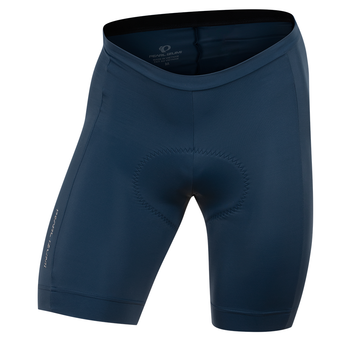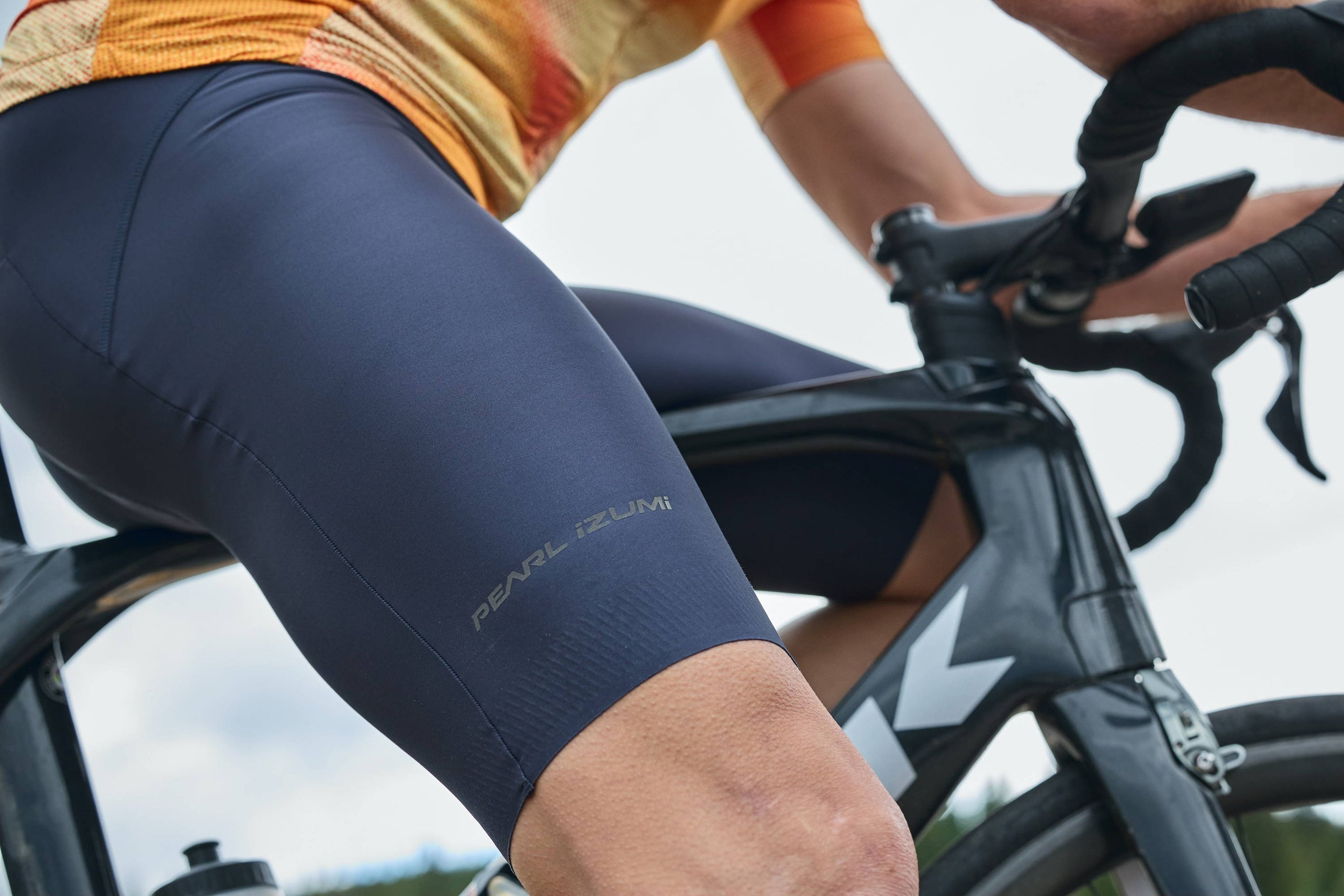One question we get frequently from dedicated cyclists is how to know when it’s time to replace your cycling apparel.
High quality cycling apparel is an investment in your future health, happiness, and comfort on the bike. Riders spend hours weighing which pair of shorts, which jersey, glove or jacket most closely matches their needs on the bike. And it can add up; it will come as no surprise to a longtime cyclist that a really good pair of bib shorts and a premium jersey can cost more than $300 – sometimes much more, depending on brand and your taste. It’s natural to want a cycling kit that lasts a long time, and to use every available bit of that durability, before moving on to the next evolution of personal riding gear.
PEARL iZUMi offers legendary durability. It’s been one of the key characteristics of the brand’s products for decades. Virtually every cyclist in America has an anecdote about how long a PEARL iZUMi product lasted them, despite regular use. But even PEARL iZUMi’s products aren’t magic; they do wear out eventually. The following is intended to share the most common signs that a cycling apparel product is failing, regardless of which brand made it. Please note that PEARL iZUMi offers a limited lifetime warranty on all products, and will replace, repair or refund any premature failure due to material or construction.
Road Shorts and Tights
Cycling shorts, and literally by extension, cycling tights, have three common areas that wear out at the end of their lifecycle, which can range from one cycling season of sustained use if that’s the only pair used to several seasons if in rotation with several pair and cared for carefully. The areas that give out first include the chamois, the body of the short itself, and the leg gripper at the hem of the short.
The chamois, or bike short padding, can pack out after many cycles of riding and washing. The cushion begins to recover less from being compressed by the rider’s weight, and starts to feel more firm or “dead” to the touch. There’s a bit of personal preference involved here, but a rider with a packed-out chamois will feel every small bump on the ride. Experienced riders usually respond to this question with: “you’ll know when you feel it.”
The material of the short can eventually reach the end of its lifecycle, too. How long it takes can vary, but essentially, the material begins to stretch out and become less compressive – and crucially, it also becomes more see-through. You’ll often find this out from your riding partner, after you’ve spent time in the saddle leading them on the ride. Other signs include small white threads beginning to pop out of the material, even if it’s a black-colored short. Those small white threads are often the Lycra threads, or whatever stretchy material the brand used to make the road short’s stretchy and compressive characteristics. As they wear out, they break and poke out through the nylon or polyester bits of the short. These are often most visible on the outer rear of the short, or on the top of the short at the thigh. Note that sunscreen can speed this process up, so no wiping your hands on your shorts after you apply.
And finally, the hem of road shorts often sport silicone or latex leg grippers to keep the short from riding up as the cyclist pedals. These can wear out over time, most likely due to soap and agitation in the washing machine. When it wears out, it’s not always a critical failure – but the short hem might slip up some, and it’s a sure sign that the rest of the short is degrading, too.
For the longest durability, wash your cycling gear in cold water using “sport” detergent, or “free and clear” versions of detergent. Ideally, hang them to dry, though it’s OK to tumble dry low. Try to avoid washing with any open hook-and-loop applications, as these can cause road shorts to pill and/or wear prematurely. Cycling tights are mostly made of the same materials, so share the same wear and care characteristics.
Mountain Biking Shell Shorts, Liners, and Impact Protection
Baggy shell shorts, often used over a padded liner or road cycling short while mountain biking, usually end their lifecycle due to impacts to the fabric while riding. The most common way for them to end is when the rider tears them on a tree or rock while shredding the gnar. The second most common thing to go is the waist closure; whether it’s hook-and-loop for adjustable sizing, a strained button, or even a BOA dial, the closure system can be vulnerable to heavy use. At least it’s obvious to the user when it happens!
Liner shorts, which are usually mesh boxer briefs with a chamois inside, follow the same usage guidelines as road shorts, above. The chamois is the most likely culprit when these reach the end of their lifecycle – quickly realized on a bumpy mountain bike trail.
And finally, elbow and knee padding can expire after repeated usage. These are most often tubes of material with padding attached in key areas, and the hems are usually the first to go. These are usually tighter above and below the padding, so as to keep the protection in place, and they can stretch far enough over time that they no longer keep the protection where it belongs. (The same goes for insulated arm and leg warmers, and their opposite, sun sleeves and sun legs.) Alternatively, an ambitious rider that gets a little too rowdy on the trial could lawn-dart into rocks or other trailside obstacles, damaging the actual padding of their impact protection in the process.
Gloves
The most common sign that you need new gloves is that there’s only one of them; you drove off and left the other on your tail gate after post-ride victory beverages. Assuming you still have two, the most common signs that your gloves are done include packed-out padding and ineffective closure system.
The padding, like a chamois, does wear out over time from repeated compressions, and will feel thin and firmer than when it was new. Expect one to a maximum of two seasons of riding, depending on usage and how many are in the rotation.
The closure system, most often made from hook-and-loop, can wear out too. Replace your gloves with new ones when the closure system just won’t stay closed.
Jerseys and Baselayers
As far as we can tell, cycling jerseys and baselayers don’t actually wear out unless a zipper malfunctions or a pocket rips off. Replace when PEARL iZUMi introduces a sick new graphic, or maybe if the sleeve gets too stretchy. Take your old one(s) to a used gear shop so they can have a second life with another rider.
Jackets
Cycling outerwear does, in fact, need replacing from time to time. These pieces can last several years, though. Most often, the bottom of the zipper starts to tear on the side that doesn’t have the zipper slider, making it difficult to begin zipping it up. For American brands, this would be on the left side. You can make this last longer by carefully gripping both sides of the bottom of the jacket when beginning the zip, so no extra pressure is placed on either side.
The next most common outwear failure is the water-proofing finish or membrane. If it’s a water-repellant coating, it can wear out in as few as 50 washes, which is actually a long time since you usually don’t wash jackets every use. You’ll know it’s the finish if water no longer beads up on the outside of the jacket, though sometimes you can refresh it through washing and drying (tumble low.) Membranes typically take much longer to wear out – if it’s sooner than 3 years, it likely means you’ve washed it with too harsh of a detergent, evidenced by the waterproof seams delaminating. Get a new one, and while you’re out, pick up some sports detergent, too.
Cycling Shoes
Your cycling shoes can also wear out, in a number of ways. It’s time to replace mountain bike shoes when the cleat no longer will stay screwed tightly to the shoe, when the rubber cleats become worn so small that you slip when you’re hiking your bike uphill, or when the protective toe cover falls off.
Road shoes are a bit more nuanced: replace these when they lose their “pop”, or performance stiffness, over time. They should feel stiff, with a very energetic response to the pedal from your pedal stroke, rather than a kind of dampened delay.
On the more obvious side, replace them when the cleat can no longer be tightened enough to stay in place, or alternatively, when the rubber traction falls off the sole – unless you’re going to use them for extremely nerdy tap dancing, you’re going to want all the traction you can get off the bike, even if you’re just popping in the café for a coffee mid-ride.







Comments